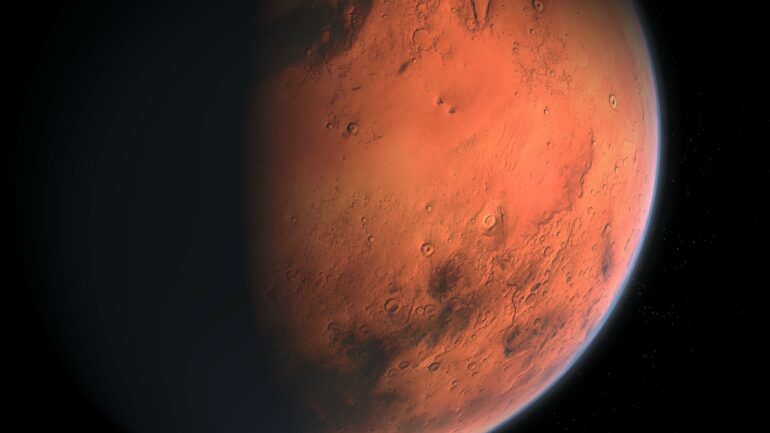A study led by a Monash University geologist has provided fresh evidence for when high rates of erosion occurred throughout the history of Mars.
The findings, published today in Geology date when climate was far more erosive in Mars’ past—with the implication that there were sustained periods of time when liquid water moved across the planet’s surface.
Scientists have long been keen to understand how Mars went from a state potentially more like modern Earth, to the desolate inhospitable place it is today.
“If we want to know if there was life on Mars, we need to understand the sedimentary rock record,” said lead study author Dr. Andrew Gunn, from the Monash University School of Earth, Atmosphere and Environment.
“Our study determines the timing and rates of sediment erosion and accumulation over Mars’ geologic history in a completely novel way, and for the first time quantifies a measure of the erodibility of each of the types of rocks we see on Mars’ surface,” he said.
“It is significant because we show that the abundance of sands blown by wind into craters on Mars’ surface can be linked to the climate history of the planet, unlocking a new way to understand when in geologic time Mars may have been habitable.”
The researchers drew on multiple datasets to estimate the size of crater sand deposits and what produced them, this included geologic maps, climate simulations and satellite data. They synthesized and interpreted these data to understand the controls and timing of erosion on Mars.
On Earth and Mars there is a sedimentary cycle where surface rocks are slowly eroded into sediments, the sediments bury each other, new rocks are made, and the process continues. On Earth the surface is recycled by tectonics, erasing the old sediments across most of the planet, but on Mars sediment accumulations on the surface are mostly preserved to the modern day.
The erosion of rocks occurs much faster when they collide with one another in liquid relative to gas since liquids can carry larger, heavier rocks. To produce sediment that can be moved by wind, often it must be broken down into smaller particles by rivers beforehand.
“Seeing high rates of accumulation in a certain period of Mars’ history indicates that it was much more likely there was active rivers eroding material then,” said Dr. Gunn.
“Plenty of evidence for surface water in Mars’ past has been published before—meaning there was liquid water on the surface and an atmosphere to sustain it (i.e., conditions more conducive to life)—but the jury is still out on when exactly, and for how long, this occurred.”
More information:
Andrew Gunn et al, Accumulation of windblown sand in impact craters on Mars, Geology (2022). DOI: 10.1130/G49936.1
Citation:
Study reveals new way to reconstruct past climate on Mars (2022, May 13)



